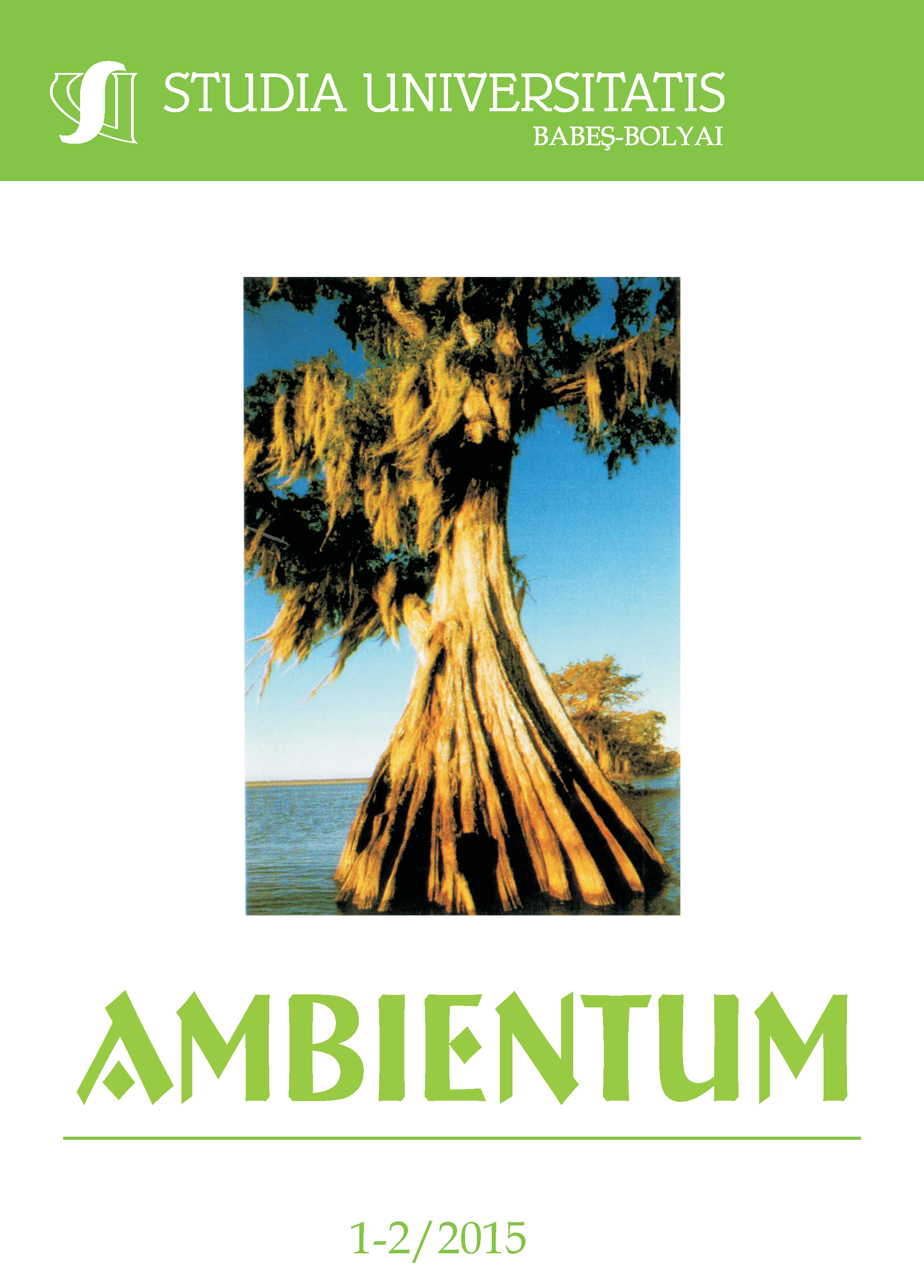INDOOR ENVIRONMENT – AIR QUALITY AND THE RISKS ON HUMAN HEALTH
Keywords:
indoor air quality, human health, VOC, particulate matterAbstract
Indoor environment quality is a subject of great interest among scientists worldwide, because people spend indoors the most of their time (i.e. homes, offices, vehicles, restaurants, etc.). In this time, they are exposed to the different type of pollutants such as volatile organic compounds and particulate matter, two of the most important sources of the poor indoor air and which have been associated with various adverse health effects. The aim of our experimental studies was to monitor the volatile organic compounds belonging to different chemical categories, such as aromatics, aldehydes, halogenated compounds, esters, and the particulate matter in indoor air of three residential spaces located in urban area of Bucharest, Romania. The compounds, selected based on the effect they may have on the human health, were monitored by using the equipment based on a photo-ionization detector (PID) that detects and records, in real time, the concentrations of compounds. Because the size and concentration of the particles matter are extremely important in setting their action on the occupants’ health, were monitored the concentrations of fine and coarse particles fractions, in a volume of air taken at present time intervals, using an optical particle counter. The final purpose of this monitoring activity was, on the one hand to obtain useful information on the indoor air from residential spaces, and on the other hand, for the awareness of acute necessity for action to improve the quality of our daily indoor environment.
References
Baker S.R., Driver, J., McCallum, D.B., 2001, Residential Exposure Assessment. New York: Kluwer Academic Publishers.
Bernstein, J.A.; Alexis, N.; Bacchus, H.; Bernstein, I.L.; Fritz, P.; Horner, E.; Li, N.; Mason, S.; Nel, A.; Oullette, J.; Reijula, K.; Reponen, T.; Seltzer, J.; Smith, A.; Tarlo, S.M, 2008, The health effects of nonindustrial indoor air pollution, J Allergy Clin Immunol, 121 (3), pp.585-591.
Buonanno, G., Giovinco, G., Morawska, L., Stabile, L., 2015, Lung cancer risk of airborne particles for Italian population, Environ Res 142, pp.443-451.
Crilley, L.R., Ayoko, G.A., Stelcer, E., Cohen, D.D., Mazaheri, M., Morawska, L., 2014, Elemental composition of ambient fine particles in urban schools: sources of children’s exposure, Aerosol and Air Quality Research, 14, pp.1906-1016.
Donaldson, K., 2003, The biological effects of coarse and fine particulate matter, Occup Environ Med, 60, pp.313-314.
Fromme, H., Twardella, D., Dietrich, S., Heitmann, D., Schierl, R, Liebl, B., Ruden, H., 2007, Particulate matter in the indoor air of classrooms exploratory results from Munich and surrounding area, Atmospheric Environment 41, pp.854-866.
Fromme, H., Particles in the indoor environment, available at www.intechopen.com.
Grandjean P, Landrigan PJ., 2006, Developmental neurotoxicity of industrial chemicals, Lancet, 368, pp.2167–2178.
Ionescu, A., Pop, I-C., Roşu, C., Gurzău, E.S., Neamţu, I., 2011, The exposure of primary school children to carbon monoxide, particulate matter and microclimate from Alba County, Studia UBB Ambientum, LVI, 1, pp.67-71.
Kuehn C.M., Mueller, B.A., Checkoway, H. & Williams, M., 2007, Risk of malformations associated with residential proximity to hazardous waste sites in Washington State, Environmental Research, 103, pp.405–412.
Lee, J.Y., Lee, S-B., Bae, G-N., 2014, A review of the association between air pollutant exposure and allergic diseases in children, Atmospheric Pollution Research, 5, pp.616-629.
Leung, T.F., Ko, F.W., Wong, W.W., 2012, Role of pollution in the prevalence and exacerbations of allergic diseases in Asia, J Allergy Clin Immunol, 129, pp.42-47.
Lin Chi-Chi, Peng, C-K, 2010, Characterization of indoor PM10, PM2,5 and ultrafine particles in elementary school classrooms: a rewiew, Environ Engineer Sci, 27, pp.915-922.
Moghaddasi, Y., Mirmohammadi, S., Ahmad, A., Nejad, S.E., Yazdani, J., 2014, Health–risk assessment of workers exposed to flour dust: A cross-sectional study of random samples of bakeries workers, Atmospheric Pollution Research 5, pp.113–118.
Nenciu F., Vaireanu D.I., 2014, A versatile system for indoor monitoring of some volatile organic compounds, Rev.chim (Bucharest), 65, no.5, pp.565-570.
Saraga, D., Pateraki, S., Papadopoulos, A., Vasilakos, C., Maggos, T., 2011, Studying the indoor air quality in three non-residential environments of different use: a museum, a printery industry an d an office, Building and Environment 46, pp.2333-2341.
Slezakova, K., Morais, S., do Carmo Pereira, M., 2012, Indoor Air Pollutants: Relevant Aspects and Health Impacts, Environmental Health - Emerging Issues and Practice, Prof. Jacques Oosthuizen (Ed.), ISBN: 978-953-307-854-0, InTech, available at: http://www.intechopen.com/books/environmental-healthemerging-issues-and-practice/indoor-air-pollutants-relevant-aspects-and-health-impacts.
Vasile, V., Cioacă, A., 2011, Metode şi tehnici experimentale pentru determinarea emisiilor provenite din materialele de construcţii, Revista Urbanism. Arhitectură. Construcţii, 2, pp.63-66.
Downloads
Published
How to Cite
Issue
Section
License
Copyright (c) 2015 Studia Universitatis Babeș-Bolyai Ambientum

This work is licensed under a Creative Commons Attribution-NonCommercial-NoDerivatives 4.0 International License.





 ISSN (online): 2065-9490 | ISSN (print): 1843-3855 | ISSN-L: 2065-9490
ISSN (online): 2065-9490 | ISSN (print): 1843-3855 | ISSN-L: 2065-9490